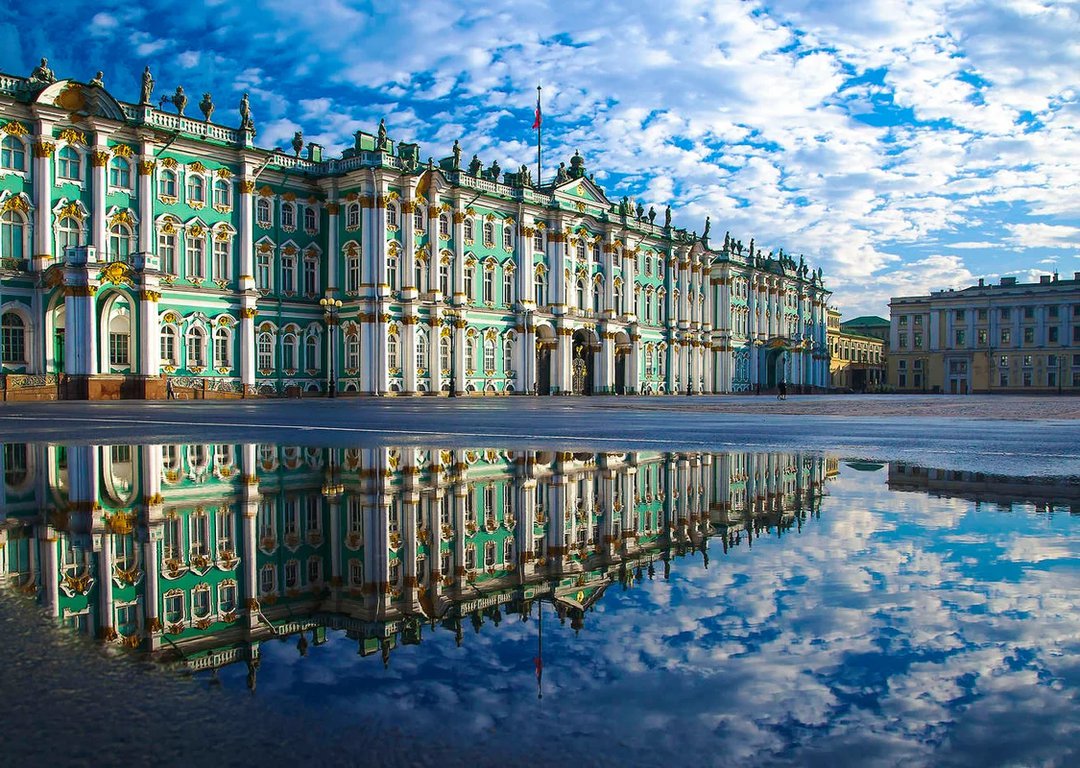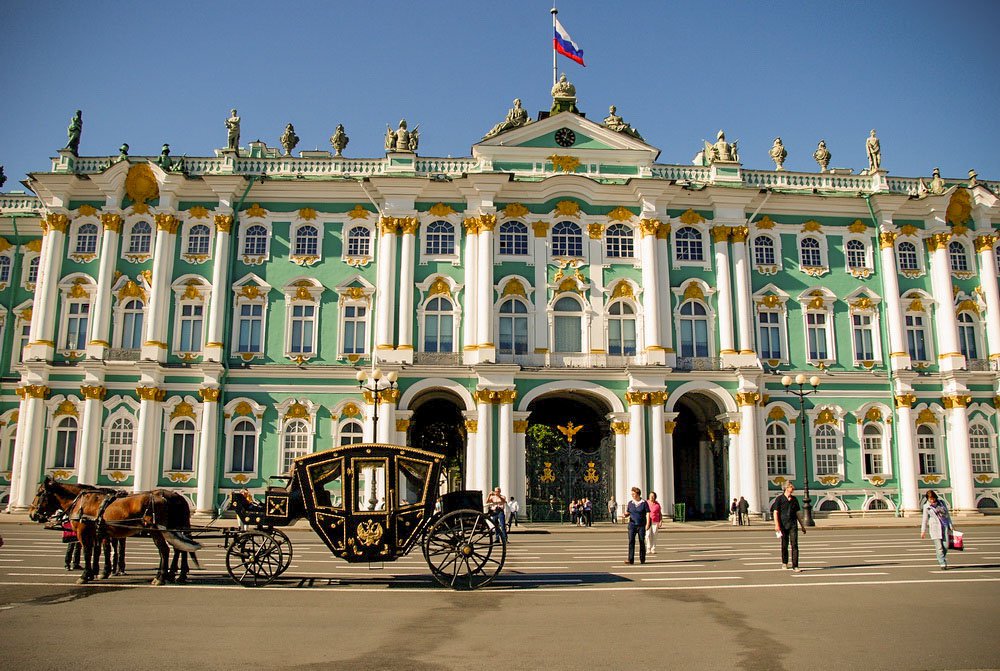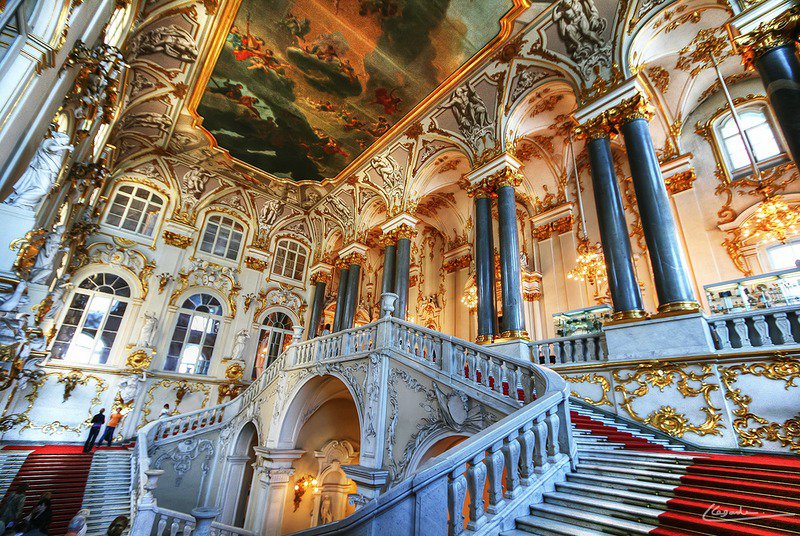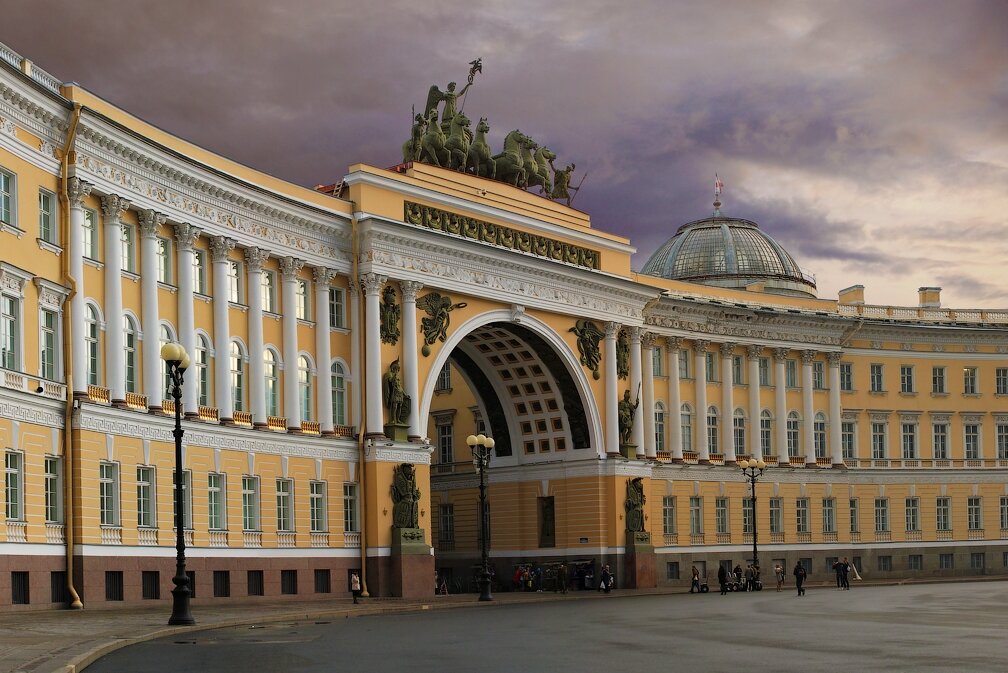 EL PALACIO DE CATALINA
EL PALACIO DE CATALINA➤Breakfast
➤Pushkin / Tsarskoye Selo
➤Visita el palacio de Catalina y la mundialmente famosa Sala Ámbar
➤Tiempo libre en el parque
 EL PALACIO DE CATALINA
EL PALACIO DE CATALINA.
Es un palacio rococó ubicado en la ciudad de Tsarskoye Selo (Pushkin), a 30 km al sur de San Petersburgo. Fue la residencia de verano de los zares rusos. La residencia se originó en 1717 cuando Catherine I contrató al arquitecto alemán Johann-Friedrich Braunstein para construir un palacio de verano para su placer. La construcción duró cuatro años, y el 30 de julio de 1756 el arquitecto presentó el nuevo palacio de 325 metros de largo a la Emperatriz.
 HABITACION AMBAR
HABITACION AMBAREs una cámara reconstruida decorada con paneles de color ámbar con respaldo de hojas de oro y espejos, ubicada en el Palacio de Catalina de Tsarskoye Selo cerca de San Petersburgo. Construida en el siglo XVIII en Prusia, la Sala de Ámbar original fue desmantelada y finalmente desapareció durante la Segunda Guerra Mundial. Antes de su pérdida, fue considerada una "Octava Maravilla del Mundo". Se instaló una reconstrucción en el Palacio de Catalina entre 1979 y 2003.
¡Ven y comienza a descubrir Rusia!
 Explore the Hermitage on your own
Explore the Hermitage on your ownOur tour starts in the morning and you have three hours with our experienced guide. In the afternoon you are free to stay in the Hermitage to look its treasures on your own. You can walk across the Palace Square to the General Staff Building to see the superb collection of Impressionists in the modern exhibition rooms.
 General Staff Building
General Staff BuildingThe General Staff Building is indeed a stunning example of Neoclassical architecture in Saint Petersburg. Designed by Karl Ivanovich Rossi, it beautifully showcases the era’s grandeur and ambition. The triumphal arch not only serves as a unifying element between the two wings of the building but also symbolizes Russia’s military achievements, particularly its victory in the Napoleonic Wars.
The symmetry of the structure aligns elegantly with the Winter Palace, enhancing the overall architectural harmony of Palace Square. The arch itself, adorned with statues and reliefs, stands as a testament to the glory of the Russian Empire. Today, the building houses the State Hermitage Museum's collections.